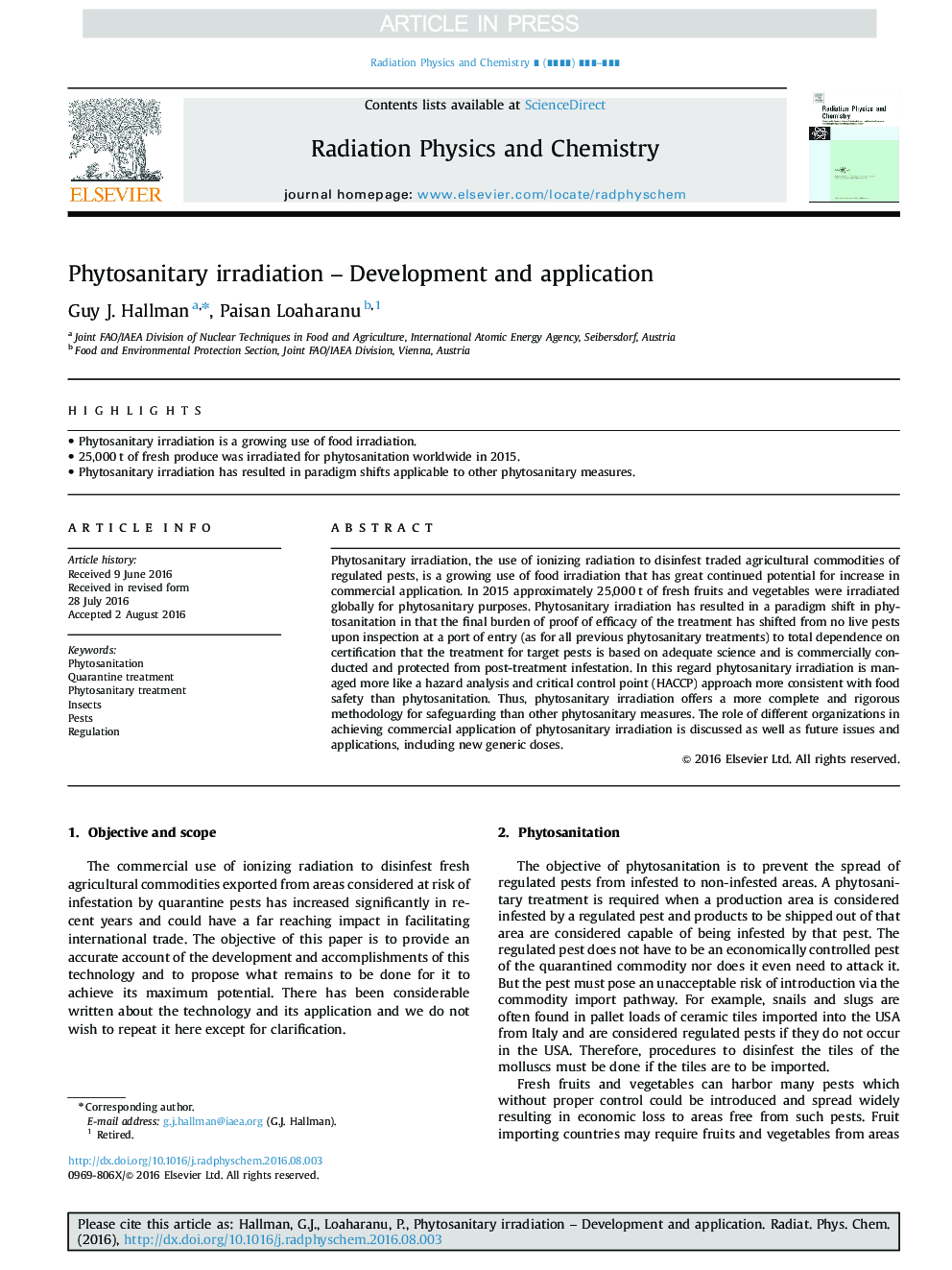| Article ID | Journal | Published Year | Pages | File Type |
|---|---|---|---|---|
| 5499361 | Radiation Physics and Chemistry | 2016 | 7 Pages |
Abstract
Phytosanitary irradiation, the use of ionizing radiation to disinfest traded agricultural commodities of regulated pests, is a growing use of food irradiation that has great continued potential for increase in commercial application. In 2015 approximately 25,000Â t of fresh fruits and vegetables were irradiated globally for phytosanitary purposes. Phytosanitary irradiation has resulted in a paradigm shift in phytosanitation in that the final burden of proof of efficacy of the treatment has shifted from no live pests upon inspection at a port of entry (as for all previous phytosanitary treatments) to total dependence on certification that the treatment for target pests is based on adequate science and is commercially conducted and protected from post-treatment infestation. In this regard phytosanitary irradiation is managed more like a hazard analysis and critical control point (HACCP) approach more consistent with food safety than phytosanitation. Thus, phytosanitary irradiation offers a more complete and rigorous methodology for safeguarding than other phytosanitary measures. The role of different organizations in achieving commercial application of phytosanitary irradiation is discussed as well as future issues and applications, including new generic doses.
Related Topics
Physical Sciences and Engineering
Physics and Astronomy
Radiation
Authors
Guy J. Hallman, Paisan Loaharanu,
